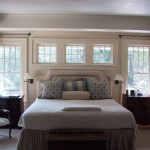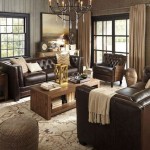What Colors Are Used In Farmhouse Decor?
Farmhouse decor, a style characterized by its warmth, simplicity, and connection to rural aesthetics, relies heavily on a specific color palette to achieve its signature look. The colors used in farmhouse decorating are generally inspired by natural elements, creating a sense of calm and comfort. Understanding these color choices is crucial for recreating the desired farmhouse ambiance in any space.
The core of farmhouse color schemes centers around neutral tones. These provide a foundational canvas upon which other design elements are layered. Walls, large furniture pieces, and foundational textiles often feature these neutral colors, lending an air of spaciousness and serenity to the room. Beyond the neutral base, accent colors play a crucial role in adding personality and visual interest, often drawing inspiration from vintage finds or the surrounding landscape.
The specific shades within the farmhouse palette can vary depending on individual preferences and the desired level of rusticity. Some may lean towards a more modern, brighter interpretation of the style, while others embrace a more traditional, weathered aesthetic. However, certain colors consistently appear as central elements in farmhouse decorating, contributing to its overall appeal.
The Foundation of Farmhouse: Neutral Colors
Neutral colors are the bedrock of any farmhouse design. These shades serve as versatile backgrounds, allowing furniture, accessories, and architectural details to stand out. The most common neutral colors in farmhouse decor include:
White: White is arguably the most prevalent color in farmhouse design. It embodies cleanliness, brightness, and simplicity. White walls are a staple, creating an open and airy feel, especially in smaller spaces. Different shades of white are often incorporated, ranging from crisp, bright whites to warmer, off-whites with subtle undertones. These variations add depth and prevent the space from feeling sterile. White is also commonly used for cabinetry, trim, and larger furniture pieces, providing a unifying element throughout the room.
Cream: Cream, a warmer alternative to white, offers a similar sense of neutrality but with a softer, more inviting touch. It adds a touch of coziness to the space without sacrificing brightness. Cream-colored walls can create a more relaxed atmosphere than stark white, particularly in rooms with ample natural light. Cream tones are also popular for upholstery, area rugs, and other textiles, contributing to the overall sense of comfort.
Gray: Gray has become increasingly popular in modern farmhouse design. It provides a sophisticated neutral backdrop that complements both rustic and contemporary elements. Lighter shades of gray, such as dove gray or greige (a blend of gray and beige), are often used for walls to create a calming and versatile space. Darker grays can be incorporated as accent colors in furniture, accessories, or architectural details, adding depth and visual interest.
Beige: Beige is a classic neutral color that lends a sense of warmth and earthiness to farmhouse decor. It is a versatile choice for walls, flooring, and upholstery, providing a neutral foundation that complements a wide range of accent colors. Beige tones evoke a sense of comfort and simplicity, perfectly aligning with the core principles of farmhouse design.
Adding Character and Depth: Muted Accent Colors
While neutral colors form the foundation of farmhouse decor, muted accent colors inject personality and visual interest into the space. These colors are typically inspired by nature, evoking a sense of tranquility and connection to the outdoors. Common muted accent colors in farmhouse design include:
Soft Blues: Soft blues, such as powder blue, sky blue, and dusty blue, are frequently used in farmhouse interiors. These hues evoke a sense of calm and serenity, reminiscent of open skies and tranquil waters. Soft blues can be incorporated in various ways, from painted furniture and accent walls to textiles like throw pillows and curtains. They complement the neutral backdrop, adding a touch of color without overwhelming the space.
Sage Green: Sage green, a muted, earthy green, is a popular choice for adding a touch of natural color to farmhouse decor. It brings the outdoors in, creating a sense of connection to nature. Sage green can be used on walls, cabinets, or furniture, adding a subtle yet impactful pop of color. It pairs well with other neutral tones and complements natural wood finishes.
Pale Yellow: Pale yellow offers a cheerful and inviting accent color option. It adds a touch of warmth and sunshine to the space without being overly bright or overwhelming. Pale yellow can be incorporated in accessories like lamps, vases, or artwork, or used as a subtle accent color on walls or furniture. It adds a touch of vintage charm and complements the rustic elements of farmhouse decor.
Light Gray-Greens: Similar to sage green, light gray-greens offer a more subtle and muted take on incorporating green into the space. These colors often lean toward the gray side, providing a sophisticated and calming presence. They work well as wall colors, cabinet finishes, or even in larger furniture pieces, blending seamlessly with the neutral palette while adding a touch of organic color.
Embracing Natural Elements: Textural Colors and Wood Tones
Farmhouse decor emphasizes natural materials, particularly wood. Therefore, the colors and tones of wood play a significant role in the overall aesthetic. The natural variations in wood grain and color add warmth, texture, and character to the space. The specific wood tones used can vary, but common choices include:
Natural Wood Tones: Unstained or lightly stained wood is a hallmark of farmhouse design. These natural wood tones showcase the beauty of the wood grain and add a sense of authenticity to the space. Common wood types used in farmhouse decor include pine, oak, and maple, each offering its unique color variations. Natural wood tones are often incorporated in furniture, flooring, and architectural details, creating a warm and inviting atmosphere.
Weathered Wood Finishes: Weathered or distressed wood finishes add a touch of rustic charm and history to farmhouse decor. These finishes can be achieved through various techniques, such as sanding, staining, and painting, creating a worn and aged appearance. Weathered wood is often used in furniture, accent pieces, and architectural elements, adding character and visual interest to the space.
Painted Wood: While natural and weathered wood tones are prominent, painted wood also plays a role in farmhouse decor. Painted wood can add a pop of color or create a more cohesive look, complementing the overall color scheme. Common paint colors for wood furniture and accents include white, cream, gray, and muted blues and greens. The key is to choose colors that align with the neutral palette and enhance the rustic charm of the farmhouse style.
Metallic Accents: While not a color in the traditional sense, metal accents contribute significantly to the farmhouse aesthetic. Bronze, copper, and wrought iron finishes are common choices for hardware, lighting fixtures, and decorative elements. These metallic accents add a touch of industrial charm and complement the natural wood tones and muted colors.
The skillful combination of these colors, textures, and materials is what defines farmhouse decor. The emphasis on natural elements, muted colors, and comfortable simplicity creates a welcoming and timeless style that resonates with many. By carefully selecting and incorporating these colors, anyone can bring the charm of farmhouse living into their home.
The use of color in farmhouse design is deliberate and purposeful, aiming to create a space that is both aesthetically pleasing and deeply comforting. The neutral foundation provides a sense of calm and spaciousness, while the muted accent colors add personality and visual interest. The embrace of natural wood tones and textures further enhances the rustic charm and creates a connection to the outdoors. By understanding and applying these color principles, one can effectively capture the essence of farmhouse decor and create a home that is both beautiful and inviting.
Ultimately, the color palette chosen for a farmhouse-inspired space should reflect the personal preferences and individual style of the homeowner. While the principles outlined above serve as a helpful guide, there is room for creativity and personalization within the framework of farmhouse design. The goal is to create a space that feels authentic, comfortable, and truly reflects the spirit of rural living.

9 Best Paint Colors For A Farmhouse Look Painted Furniture Ideas Home

How To Add Color Your Farmhouse With Ease The Cottage Market

Best Types Of Paint Colors For Farmhouse Décor In 2025

How To Choose The Perfect Farmhouse Paint Colors

Ways To Infuse Color In Your Space Courtney Warren Ho

Farmhouse Style Paint Color Design Trends Boulder

60 Best Farmhouse Style Ideas Rustic Home Decor

Farmhouse Style Paint Colors And Decor Decorating

French Farmhouse Decor The Ultimate Guide Brocante Ma Jolie
Plum Pretty Decor Design Co Farmhouse Paint Colors The I Used In Each Room Of My House
Related Posts







